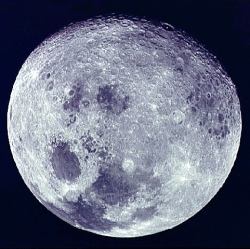
Violent impacts from comets and other hurtling bodies can pepper planets and their moons with the molecular building blocks of life, new research suggests.
The high-speed collisions unleash intense shock waves that can turn simple organic compounds found in comets and on icy worlds into amino acids, which make proteins, cells and ultimately all living organisms.
The findings suggest that rather than being a purely destructive force, the impacts increase the chances of life originating and being widespread across our solar system.
"We know that impacts are very common in the solar system, because we can see the craters left behind on different planetary bodies," said Zita Martins, an astrobiologist at Imperial College London. "If impacts occur then more complex molecules can be made, so these building blocks of life could be widespread throughout our solar system."
The surfaces of planets and moons are scarred from billions of years of violent impacts with space rocks left over from the birth of the solar system. The impacts release profound amounts of energy: the meteor that tore into the sky over Chelyabinsk in Russia this year arrived at more than 18 kilometres per second and exploded with 30 times the energy of the Hiroshima nuclear bomb.
Scientists have previously used computer models to demonstrate that shock waves could turn simple molecules found in icy comets, such as ammonia, carbon dioxide and methanol, into complex amino acids. That work prompted researchers to test the idea by reconstructing celestial impacts in the laboratory.
Researchers at Imperial College and the University of Kent teamed up with Nir Goldman, a researcher at the US Lawrence Livermore National Laboratory, whose models showed that amino acids might be made in comet strikes. They made batches of ice mixture laced with ammonia, methanol and carbon dioxide to represent different compositions of comets. To mimic a comet’s impact on a planet, they fired sterilised steel balls into half-kilogram lumps of each ice mixture using an instrument called a light gas gun. After each shot, the scientists looked for traces of amino acids in the ice they had fired at and also in a block of the same ice mixture that had not been fired at. This second lump acted as a control to ensure that any amino acids they found had been created, and were not caused by contamination before or during the firing stage.
